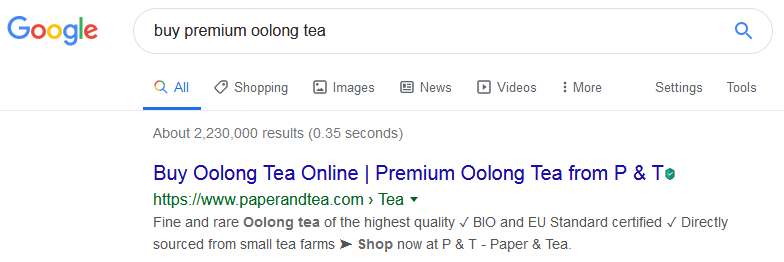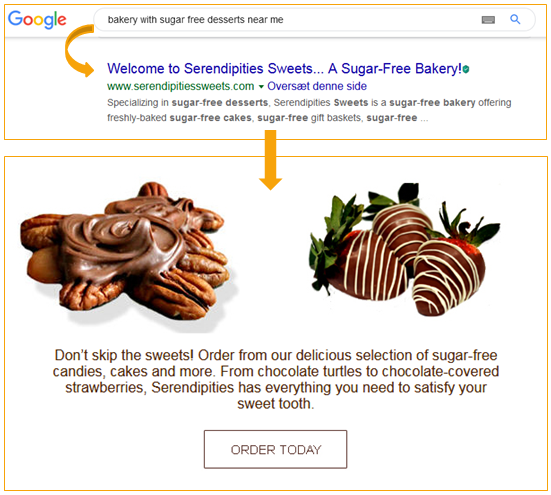Cater to keyword search intent and drive more traffic to your website.

Search intent and SEO: How they’re intertwined
Search intent and SEO go hand in hand on pages that perform well on search engines.
They’re linked because:
First, search engines have one important job and that is to satisfy a user’s search intent. In other words, a search engine’s task is to deliver content that aligns with the searcher’s purpose. That might be to find more information, to get to a specific page, or to make a purchase online.
Second, as a marketer or business owner, your goal is to give users the relevant information they’re looking for. That’s how you draw people to your website but also how you keep them there. In short, a page’s content must be tactically prepared to address whatever a specific search query aims to resolve at a given moment.
Why keyword search intent matters
From various landing pages to strategically-crafted content – let’s take a closer look at why you need to incorporate search intent in your marketing writing.
Search engines want to give users what they’re looking for—in as few steps as possible
We touched on this in the introduction, but let me say it again: Giving users what they’re looking for is what search engines are built to do. That’s why they care about user intent, i.e. the types of searches people run. Intent is how they distinguish between search objectives, so that they can accurately deliver the most relevant results to their users. After all, a search engine is only as good as its ability to satisfy query intent.

Targeting keyword intent is how you can boost brand awareness
Since a large proportion of online experiences begin with search, it stands to reason that you’d want your pages to rank highly for applicable keywords. You want people to know you exist. Equally, you worked hard to write high-impact copy and develop engaging content – it ought to show up in user’s search results and get read! What it comes down to is your pages must be discoverable online if you are to grow awareness of your brand.
Catering to search intent is how you get to be present during prospects’ crucial decision-making moments
Anticipating search intent is what enables you to be there for potential customers throughout their purchase journey. How do you know what kind of content to create if you can’t forecast what your potential customers might be looking for online? This is also why it’s inevitable for keyword search intent to influence your inbound content marketing strategy. To move people down the funnel – convert them from visitor to lead and then from lead to paying customer – you need to appeal to prospects with the right content at the right time.
Search engines look for keywords that match intent
If what you’ve written does the best job at addressing a query, that’s going to be given priority in the form of a better ranking on search engine results pages (SERPs). In other words, search engines look at relevance, authority, and their user’s satisfaction to determine page rank. That’s why you need to be smart about your choice of keywords and how they relate to intent if you want to optimize your marketing writing for search engines.
Matching intent with content attracts qualified leads to your website
Put simply, intent and content have to match for there to be click-throughs or any kind of conversion. And if you’re running pay-per-click ads, you definitely want to attract clicks that will convert. Otherwise that’s money lost, not money well spent. But even if you’re not running ads, you still want to drive the right kind of people – qualified leads – to your website. Those are the individuals most likely to stick around, most likely to take action.
Responding to keyword search intent positions you as an expert in your field
Providing relevant (and therefore useful) content that matches keyword search intent doesn’t just solve the user’s problem – it shows him that you can be relied on to provide the solutions he’s looking for. And that’s good for business! When you’re able to satisfy your target audience’s needs and concerns, you’re able to keep people on your website for longer, increasing the likelihood they’ll convert, but also, allowing you to earn trust.

Copywriting for SEO with keyword search intent
Knowing when and how to apply keyword search intent to your marketing writing can make all the difference between pages that actually perform well on search engines, and those that don’t; pages that bring in qualified leads versus those that only ever bring in random readers; and pages that can move people to take action, and those that aren’t appropriate for that stage in the purchase journey.
Here are a few suggestions to keep in mind for content marketing writing and copywriting for landing pages.
Tip #1: Give users what they’re looking for, when they’re looking for it
Great marketing writing relies on common sense. More specifically: What are users expecting to find on a certain page? Once you have an answer, it’s a lot easier to strategize what goes on that page.
The key point is to give users what they want.
- If a visitor is looking for information, give him information—not a product page.
- If he wants to make a purchase, now is NOT the time to distract him with a blog post.
- Similarly, if someone is searching for tea products, you’ll want the landing page to focus on tea – not coffee, tea sets or other accessories.

Tip #2: Plan your keywords
You could start writing without a well-researched keyword strategy but that’s the perfect way to give yourself more work. I mean, you’ll have to go back and rewrite entire paragraphs to organically incorporate certain search terms—and have it all make sense! But if you start with a plan, it’s easier to organize everything around the keywords you’ve chosen.
Bonus Tip: Don’t forget keywords related to seasonal intent!
Tip #3: Write with the user in mind
The number one rule is to write for your audience. That would be people—not machines. A lot of people get so hung up on writing for search engines that they forget who’s going to be reading all that text to begin with. The best SEO copywriting balances writing for people and satisfying search algorithms. To do that, you must first know who your target market is, what they’re searching for, why they’re searching for that, what they want, and where they currently stand in both the purchase journey and your marketing funnel.
Tip #4: But don’t disregard search engines
Having said all that, just because you’re writing for humans doesn’t mean you can ignore search engines. You have to optimize your page – from H1 and H2 down to your linking strategy – so that search engines can easily understand what you’ve written and when it might be most useful to users.
In other words, keyword search intent isn’t just necessary for your copywriting. It’s also needed for your SEO title, custom meta descriptions, and image alt tags.

Tip #5: When it comes to landing pages, focus on one segment and one topic at a time
If you’re in the business of custom cakes, you could create a generic landing page about all the types of cakes you bake or you could create multiple landing pages to cater to different buyer segments and needs.
For example: A landing page for cute kid’s birthday cakes; custom wedding cakes; mini Valentine’s day cakes; Mother’s day cakes; and so on.
Now if you bear in mind that someone with the intent to find a mother’s day cake isn’t going to be interested in wedding cakes, you see why it makes more sense to focus on one segment at a time.
A summary of writing tips for the best search intent SEO
- Analyze search intent. What do people want to find? What keywords are they using? Do those search terms imply informational, navigational, or commercial intent? Pages, metadata, and content should match user intent.
- Start with a plan. Who is this page for, what do you want them to do on it, and how will you get readers to take action? You need the big picture to get the minute details right.
- Understand your users. Who are they and what are their goals? If you want to satisfy your target market, you need to know what makes them tick.
- Research your keywords. From keyword planning to SEO, know what works then find out if there are any gaps you can fill—keywords that competitors aren’t using.
- Optimize for each segment. Consider your buyer segments, pick a single topic, then find the unique angle you’ll take in your copywriting.